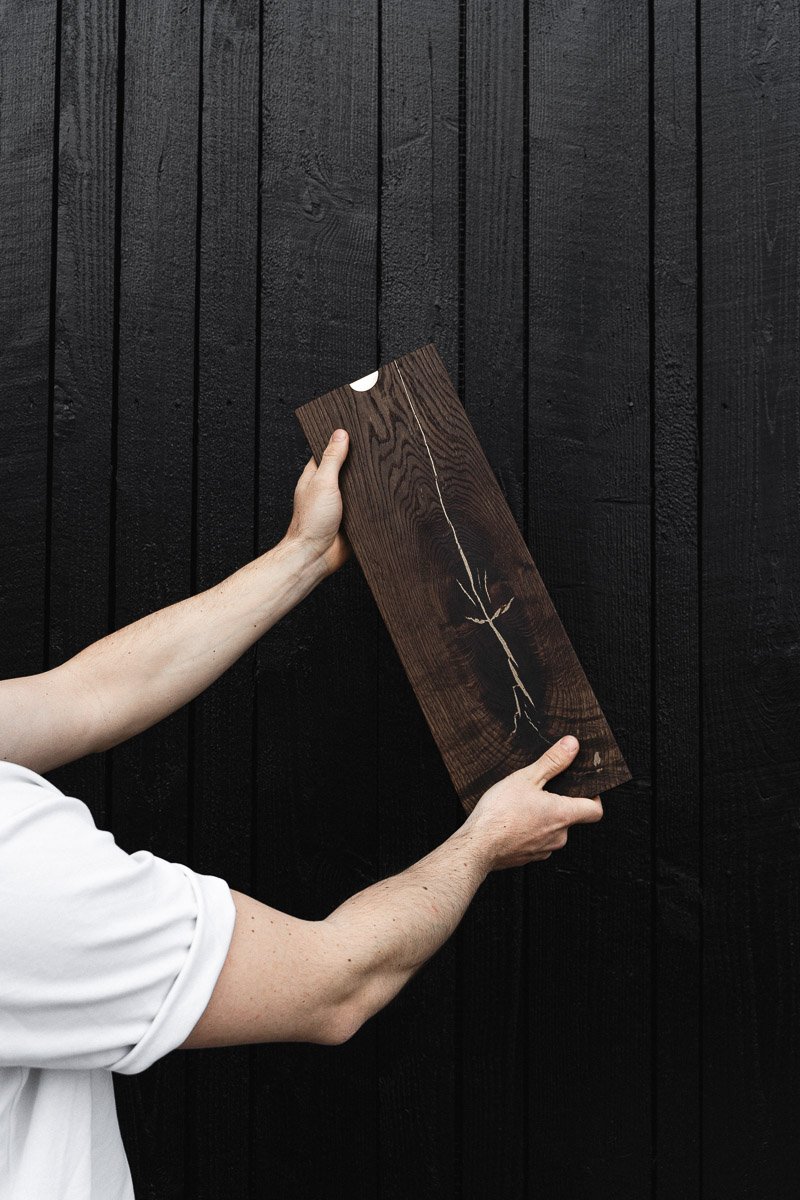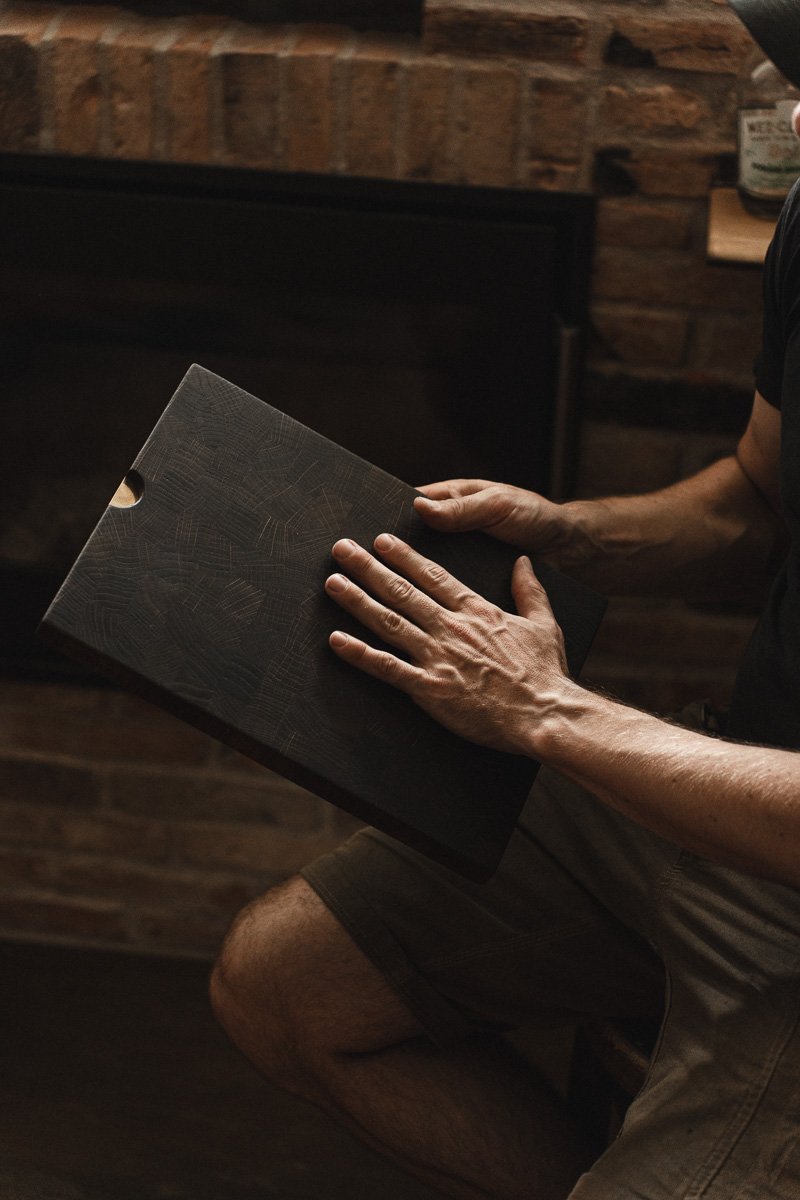
craft & techniques
ほうほう
Fusion
Hagenør aims to blend the design aesthetics of Danish and Japanese cultures, striving to create synergy between the clean lines of Japanese design and the practicality of Danish craftsmanship. Below, are listed some of the Japanese and Danish design concepts that I draw inspiration from.
ゆうごう
Japanese Design Principles:
Wabi-Sabi (侘寂): Celebrating imperfection and the beauty of natural materials like wood and stone, and the passage of time.
Mottainai (勿体無い): respect for resources, advocating minimal waste by repurposing materials creatively. It inspires artisans to use every piece efficiently, fostering sustainability and innovation in design.
Kanso (簡素): Kanso promotes simplicity and elimination of the unnecessary, encouraging clarity and minimalism in design.
Danish Design Principles:
Form & Function: Rooted in the Bauhaus movement, Danish design prioritizes functionality, ensuring that the form of an object is determined by its intended purpose.
Timeless Design: Prioritizing enduring aesthetics that transcend trends, focusing on timeless design elements.
Material Honesty: Danish design values the authenticity of materials, showcasing their natural beauty and characteristics. This principle often leads to the use of high-quality, sustainable materials in furniture and product design.
I see these principles as a guide and find it intriguing when I can reflect both Japanese and Danish design principles in a product. As I advance in my craft, I aim to create harmonies between these Eastern and Western design concepts.
Kintsugi
きんつぎ
In contrast to conventional repairs, kintsugi highlights flaws, celebrating the wood's history and character.
This delicate process involves filling cracks or knot holes with metal granules and applying adhesive.
It serves as a reminder to appreciate imperfections rather than avoid them. In a world valuing perfection, kintsugi urges us to embrace the beauty of flaws and imperfection.
The workshop
Hagenør’s workshop is a blend of carpentry and blacksmithing — a small, intimate space close to home where ideas take shape and every product comes to life
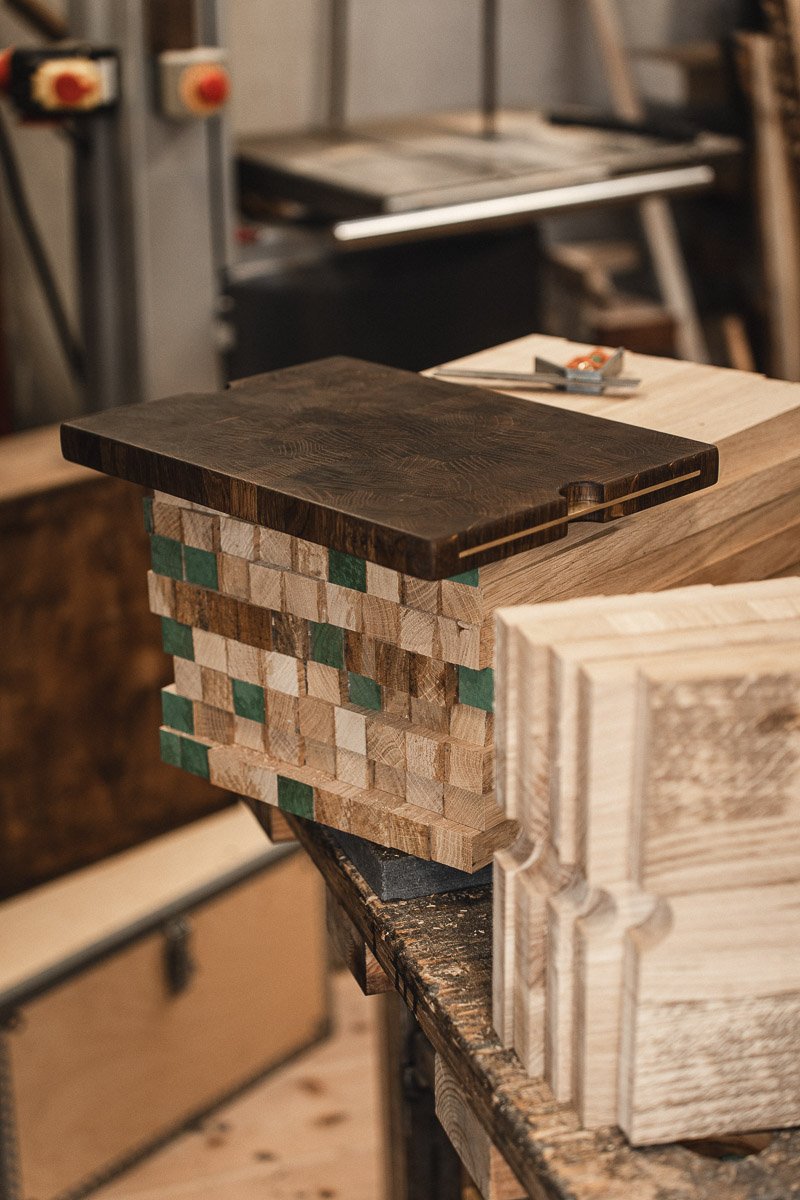

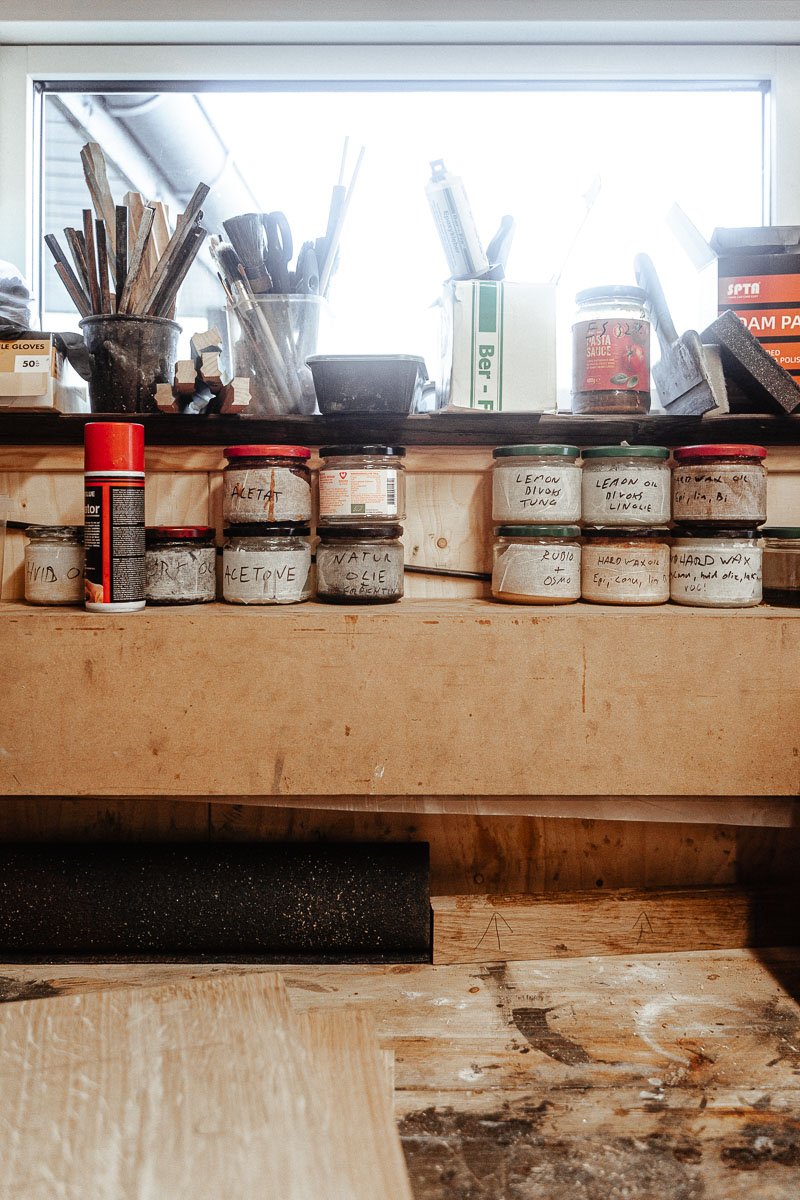
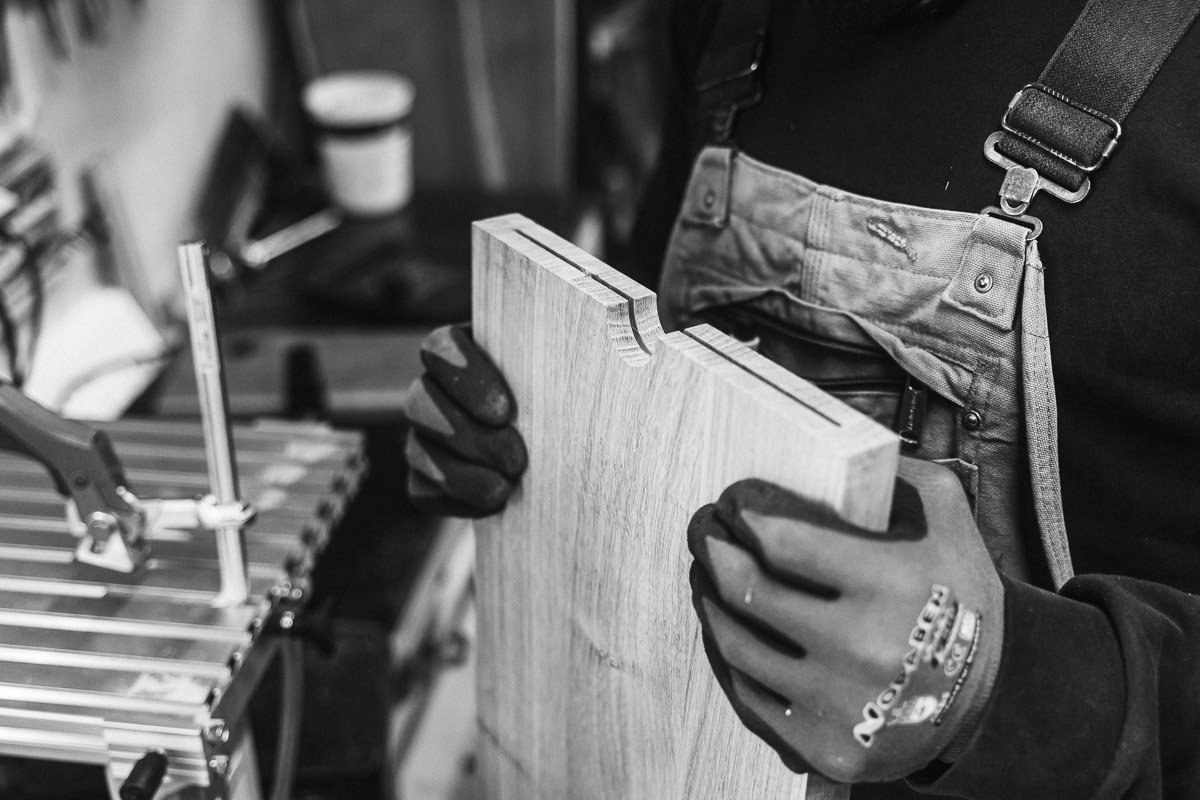

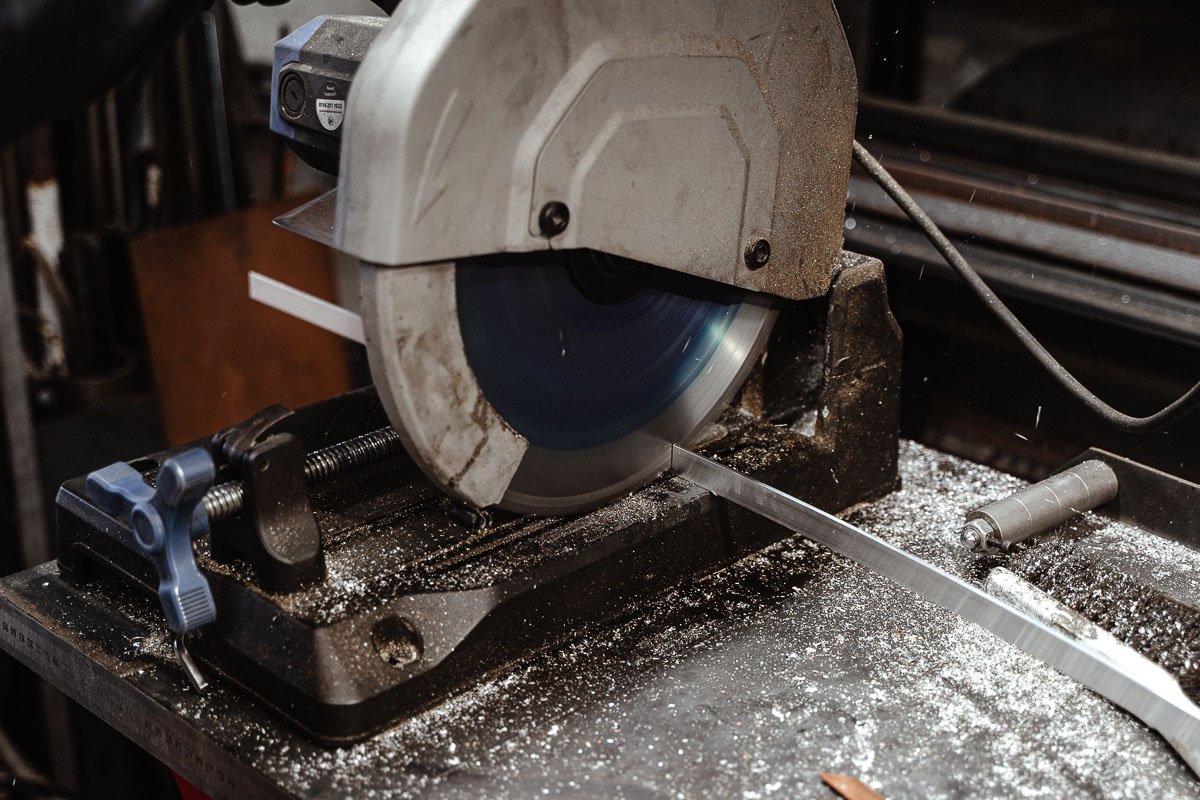

くんえん
Wood fuming
Fuming wood is a technique used to enrich the color of wood, especially oak. The wood is placed in a sealed chamber where it undergoes a reaction that deepens its natural tones.
This process results in a rich, penetrating color that is more durable and natural-looking compared to surface stains and dyes.
This traditional technique has been valued for many years in woodworking for its unique approach to enhancing wood aesthetics.
Material Contrast
たいひ
In my design work, where wood and metal are my primary materials, I explore how these two materials can work together in different alloys and wood species. The use of contrasting elements allow me to highlight the distinct qualities of each material.
Wood brings warmth and a sense of natural texture, embodying organic beauty, while metal offers sleekness and durability, representing inorganic strength.
By combining these elements, I try to create designs that balance softness with hardness, warmth with coolness, and visual appeal with functionality.

